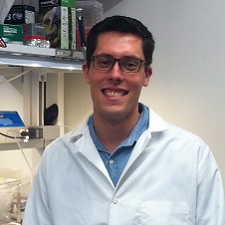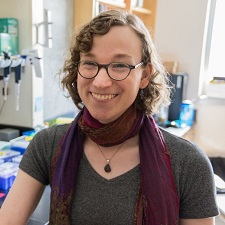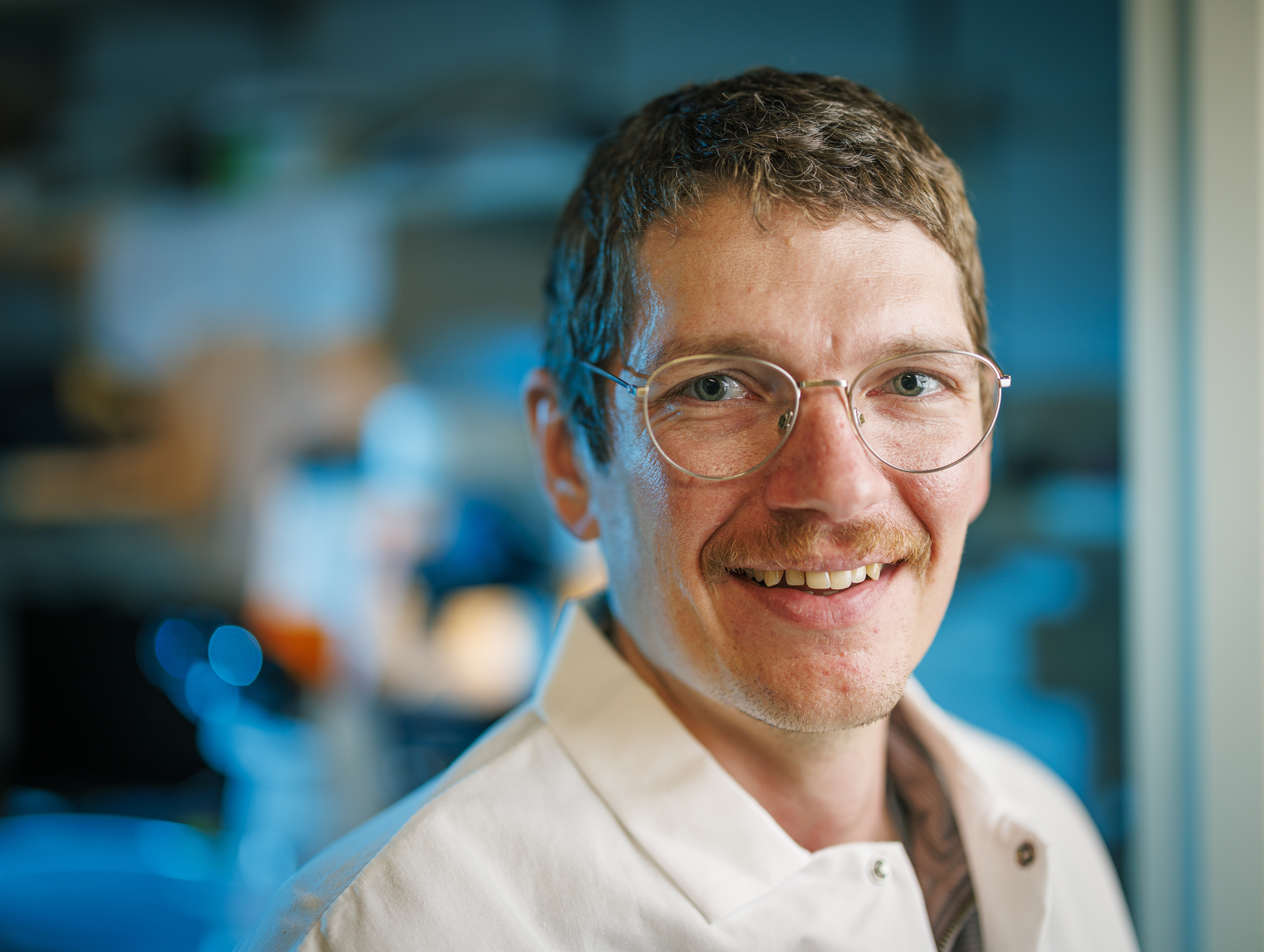Courtney Ellison, PhD

Courtney Ellison, PhD [Marilyn and Scott Urdang Breakthrough Scientist] is investigating how single bacterial cells join together to form complex, multicellular structures called biofilms. Biofilms protect bacterial cells from antibiotics and antimicrobial agents, making them difficult to eliminate. Some biofilm-forming species may cause certain cancers, and biofilms of infectious bacteria threaten immunocompromised patients such as those undergoing chemotherapy. Dr. Ellison focuses on bacterial appendages called type IV pili that play a crucial role in biofilm formation. Understanding the role of pili and their contribution to biofilm progression may lead to novel therapies to eliminate biofilms.
Dian Yang, PhD

Dr. Yang is examining tumor heterogeneity in search of new diagnostic markers and potential therapeutic targets. A tumor consists of not only cancer cells, but also immune cells, fibroblasts, and other stromal components. The diverse cell types and cell states that form the tumor microenvironment (TME) may promote disease progression and lead to therapeutic resistance. Dr. Yang aims to uncover fundamental principles of tumor evolution by generating a comprehensive and quantitative “traffic map” of cancer cell state transitions and fitness changes during tumor development. Understanding this fundamental question has the potential to reveal key biomarkers that predict treatment response and actionable targets that drive resistance, thereby opening up new possibilities for long-lasting, multilayered tumor control.
Junhong Choi, PhD

Dr. Choi develops a technology called “Molecular recording”, which allows the recording of cellular events and their lineage information into each cell’s genome. These innovative tools are critical for understanding the development of individual cells, both in normal developmental processes and in diseases like cancer. Recently, Dr. Choi has successfully demonstrated this technology by engineering human cancer cells to record their lineage or signaling events in a culture dish (“in vitro”) using CRISPR-based genome editing methods. Moving forward, Dr. Choi plans to further develop these methods to study cancer development. The goal is to uncover how specific characteristics of cancer cells emerge, ultimately identifying new targets for treatment.
Benjamin M. Stinson, PhD

Our DNA is constantly subjected to damage, and our cells must repair this damage to ensure survival. Breaks in DNA that completely sever DNA molecules are particularly toxic, and failure to repair these breaks can lead to genetic alterations that drive cancer initiation and progression. Dr. Stinson studies the two main cellular pathways that repair these DNA breaks: non-homologous end joining (NHEJ) and homologous recombination (HR). Defects in these pathways are linked to predisposition to many cancers, including leukemia, breast, ovarian, and prostate cancers. His prior work has demonstrated how NHEJ minimizes genetic alterations during DNA break repair. Ongoing work will elucidate fundamental mechanisms of HR that suppress cancer and seek to identify new HR factors. This work has important clinical implications for identifying patients that may benefit from treatments that target HR-defective tumors and for discovering potential mechanisms of resistance to treatment.
Lexy von Diezmann, PhD

Dr. von Diezmann is a biophysicist who studies how cells regulate the pathway used to repair broken DNA. Errors in specific DNA repair pathways are an early step in the development of many cancers, such as with defects in homologous recombination for breast, ovarian, and pancreatic cancers. The Diezmann lab uses high-resolution microscopy techniques to visualize the process by which DNA breaks are designated for specific repair fates, working primarily in live meiotic nuclei of the model organism C. elegans. By elucidating the mechanisms by which protein assemblies form and transmit information along chromosomes and throughout the nucleus, her lab will help provide a foundation for the development of novel chemotherapies based on modulating the DNA damage response.
Esteban A. Orellana Vinueza, PhD

Dr. Orellana Vinueza is investigating whether changes that modify the shape, stability and function of transfer RNAs (tRNAs) play a role in the development of cancer. The tRNA molecules are involved in the process that translates messenger RNA into a protein. Dr. Orellana Vinueza focuses on a tRNA methyltransferase complex that malfunctions in glioblastoma and liposarcoma. He will assess how alterations in the activity of this enzyme affect global patterns of methylation in normal and human cancer cells. Methylation is the process that controls the timing and amount of proteins that are produced in cells. Understanding how this process breaks down may help decipher the mechanisms that drive cancer and guide the development of new treatments.
Christopher P. Lapointe, PhD

Dr. Lapointe examines how the synthesis of proteins (translation) is controlled, as dysregulated translation is a ubiquitous feature of cancer. He is focused on a key challenge: how regulation that originates at the end of a messenger RNA (mRNA, a genetic molecule that encodes a protein) impacts the start of translation, which occurs near the beginning of the mRNA. His goal is to reveal and analyze dynamic pathways that underlie this fundamental mechanism to control gene expression. Using an integrated approach of single-molecule fluorescence microscopy, structural, and biochemical strategies, this research should yield generalizable insights into how translation is precisely regulated and how it is disrupted in a wide array of cancers.
